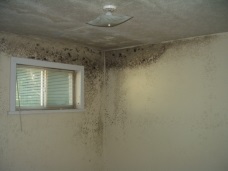The Health Effects of Mold Where You Work and Live
Mold spores are everywhere. Every time we enter a building, we bring in outside air along with mold spores. The spores are on our clothes, shoes and in the air. Normally, these mold spores, do not affect us. However, when the conditions are right and mold grows, it can be another story. What are these conditions?
- Water and moisture – If water is present or humidity high (greater than 60 percent) mold often grows.
- Porous materials – If dry wall, carpet, wood and fabric become moist or wet, they provide the perfect medium for mold to grow.
- Temperature – Many mold fungi grow well at temperatures between 60 and 80 degrees Fahrenheit, which are also ideal temperatures for human comfort. In addition, temperature fluctuations often produce the moisture needed for mold growth
What are the health effects of mold?
It can range from headaches, fatigue, coughs, respiratory problems, similar to colds and the flu, to bloody noses and even skin problems. In some people, this exposure to mold spores suppresses their immune system and then other health problems result.
Mold spores produce toxins in order to survive, these are called mycotoxins. Mycotoxins can affect human health and cause allergic reactions, sometimes very severe reactions. The mycotoxins exist in the shell of the mold spore. This means that even dead mold spores can have an adverse effect.
If you are experiencing some of these health effects over a period of time you may want to consider whether mold is present in your environment. A mold inspection of the environment is recommended along with air testing. If mold is discovered, it is important to act right away. See Turn-Key Environmental’s Services for Mold Testing in Dayton, Ohio.


